How To Make Better Progress In Functional Training
2023-04-5
Cory Cripe, Fitness Lying Down (Creator of Dynamic Strength & Movement Strength Program)
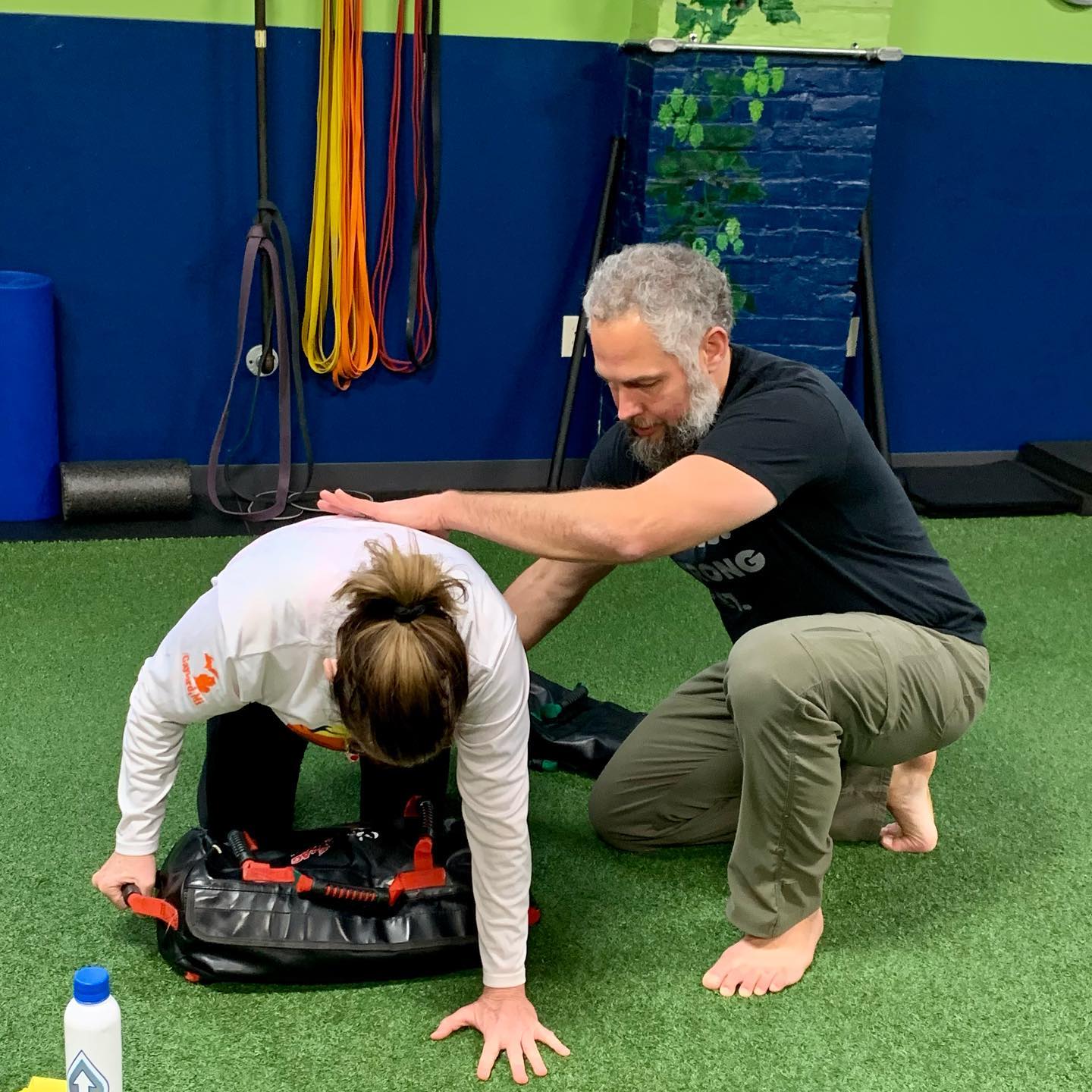
Hello once again my DVRT friends and thank you for joining me on this, the THIRD installment of creating a better DVRT experience for you and your clients. Through smarter, not just different, programming that DVRT offers, I hope we are getting you excited to see how such training can increase your success and exercise experience . Anyone can tell you to just go heavier or lift more (which ultimately leads to many plateaus with such a small focus), but it takes a special person dedicated to their craft to offer a training program with more opportunities for anyone no matter where they are in their fitness journey! Ultimately that is what this series is about. Showing you how exercise can work for YOU, not how you have to squeeze into someone else’s exercise program.
First, I would like to share that the worse trainer I ever met was…ME!!! That’s right, me – but right after I graduated from college. Here I am with this fine diploma in my hand and really no experience of training real people with real goals and with real physical issues. I went through case studies of certain people in certain demographics with certain comorbidities and what kind of strength training program would you create for them. Yeah, asking a young, 20-something male to make a program for a female, age 47, obese with shoulder pain, hypertension, pre-diabetes, and on blood pressure medication. Probably not the best person to make a successful program for this individual.
I think the only program a 20-something male should be making is one for a 20-something male. Just sayin’!
We were taught in my college programs how to create world class, sports performance training programs. However, how many athletes needing these programs were we expected to train after graduation? The majority of the population seeking guidance in the fitness industry are moms and dads, grandmas and grandpas – doesn’t seem to make much sense to build a sports performance strength training program for them since their goals are vastly different than that of elite athletes. I know my grandmama loves to clean & jerk, but I’m not sure about everyone else’s grandparents!
And I did cover the scandal bodybuilding brings to programming for the general population in an earlier blog that you can read HERE. I can hear many crying out, “But we have to make sure to dedicate enough time so Hank can get that pump in his biceps & triceps and Jane over there just wants to tone her inner thighs and upper back!”
Okay, my intent is not to write a doom and gloom post, so let me bring some light on the subject of programming for functional strength. In my previous articles you were introduced to using movement patterns as the foundation to successful programming and then how to manipulate holding position to increase or decrease the intensity of any given exercise (you can read HERE in case you missed the post about holding position too). These two concepts in themselves would be enough to improve your clients’ training experience and take the guesswork out of programming for you the professional…you’re welcome!
Let me pull the curtain back on another important training variable that will rock your world: body position. Cue the music of disappointment LOL. At Fitness Lying Down we love to use this important training variable to turn the heat up or down on a particular exercise and our clients are astonished by how a simple thing like where a foot goes can make such an impact on the meaning of a particular DVRT drill!
Time to unpack some of our favorite body positions we use on the training floor. Captain obvious over here to tell you about the standing position. Here we are with feet hip to shoulder width apart in a very strong, stable position. This is where we would typically begin most of our clients. A quick change to spice it up in a subtle way is moving to a military stance. This is where we bring both feet as close together as possible. Limiting the base of support can make any exercise a whole new experience!
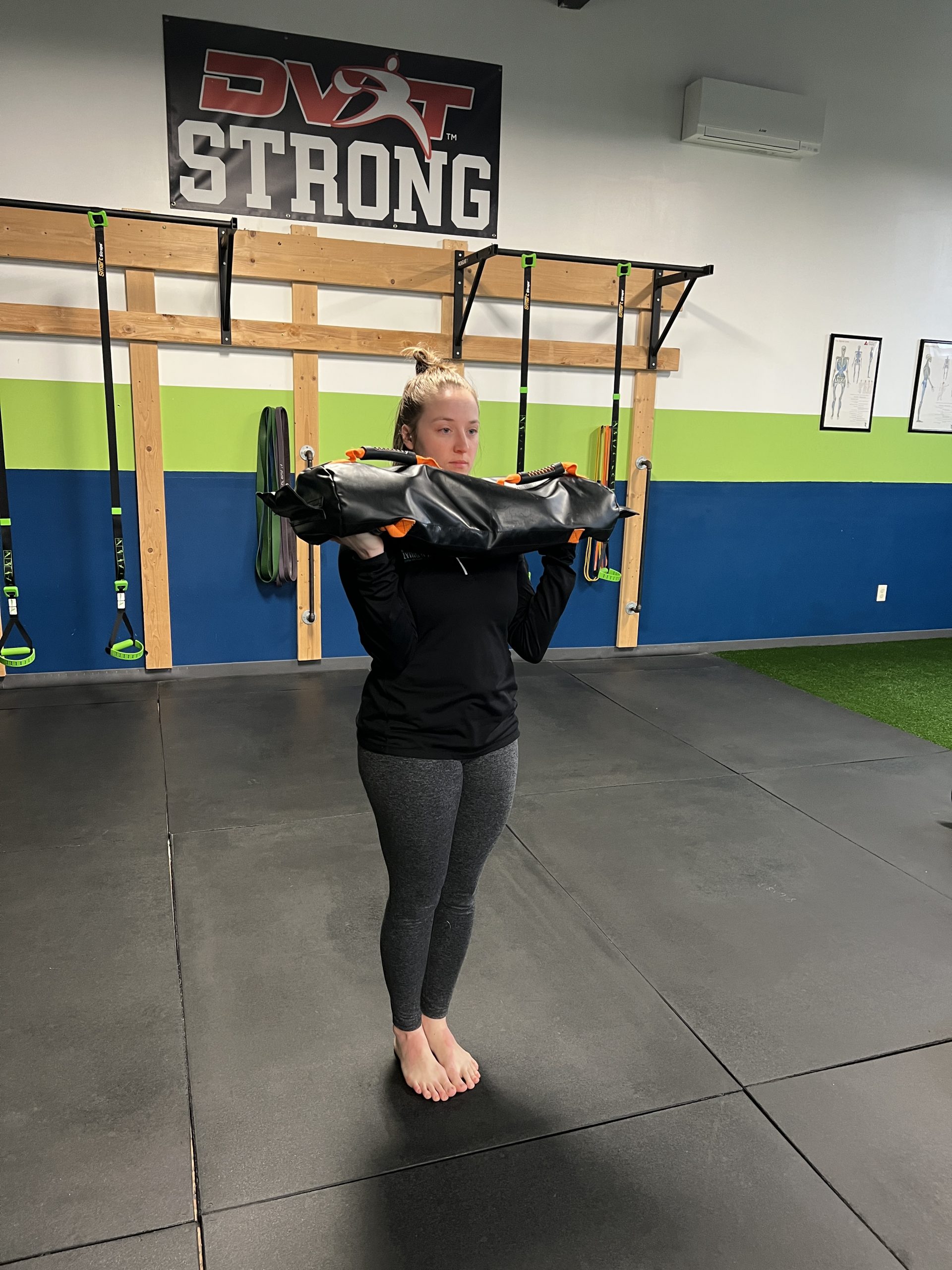
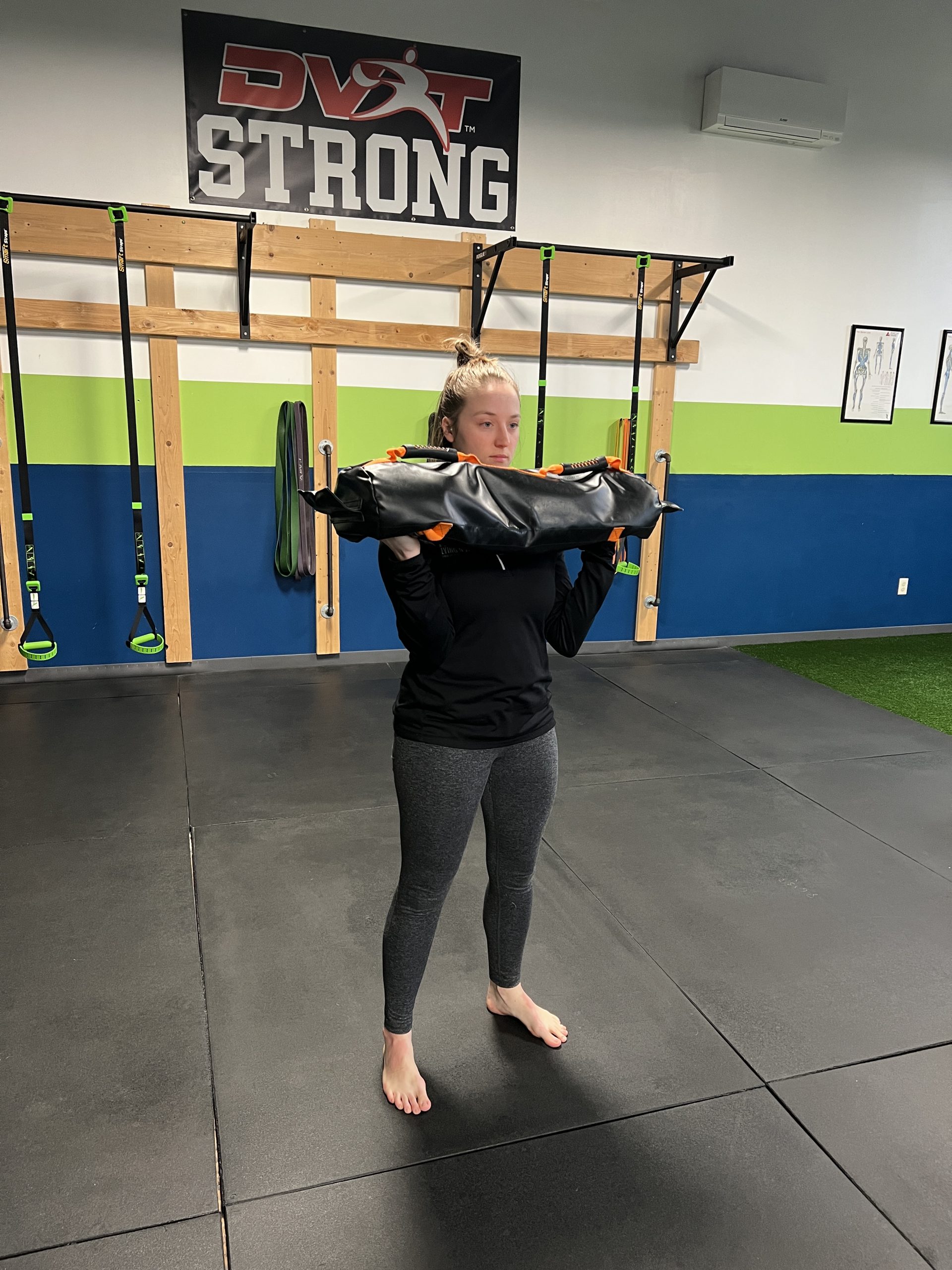
You can see here how Megan has made a small change (think of making a 5-10 pound jump) by moving to the military position (feet together) from her base stance position. This also increases the need for more muscles to be used and increase the amount of true stability training we are getting.
Just understanding the simple movement can make you look like a genius when coaching/training, but wait — there’s more! The sprinter stance (SP) can really set you apart from when it comes to designing an intentional program versus random exercises thrown on a piece of paper. The sprinter stance is set up just like it sounds. You’ll bring one foot back so the toes are in line with the front heel and the back heel is raised up, but not because you lift it up — because the ball of that foot pushes into the floor and forces it up! It’s very important to maintain the integrity of the back heel because if it starts losing and lowering to the floor there will be some serious ramifications with your hips remaining neutral.
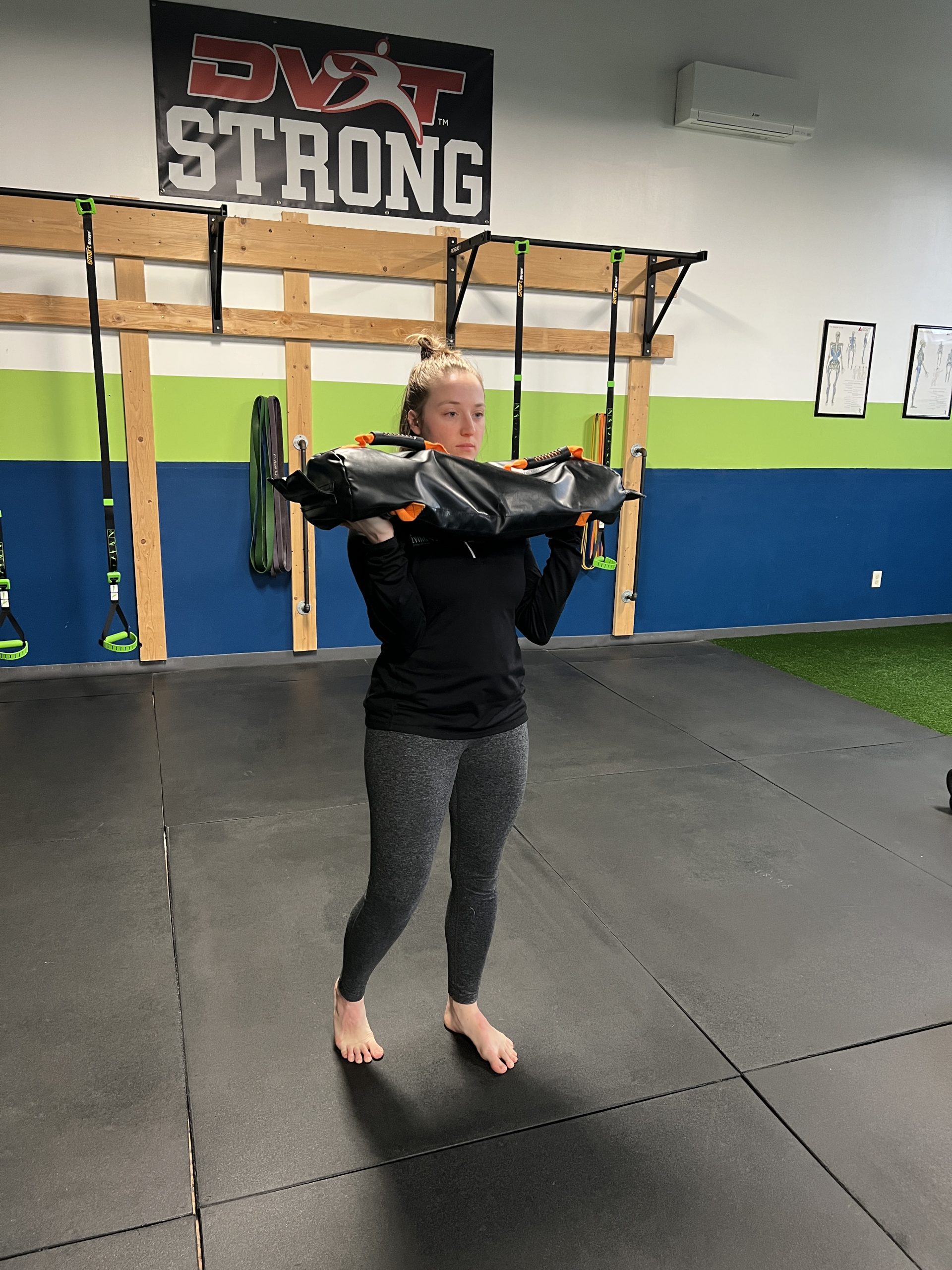
It can be a dramatic change for clients to move from a bilateral stance (feet hip width apart) to a single leg stance and the sprinter stance is exactly what is needed to help bridge that gap and teach how to move in one plane of motion (sagittal) while resisting a whole new plane of motion (frontal). It doesn’t get anymore functional than that folks!
If we were to take a more sizable step back, as if you were planning on lunging back but staying at that top spot, this is what we call our split stance. Same rules apply of the sprinter stance. The ball of the back foot is driving into the ground causing the heel to lift high. This not only helps to keep the pelvis neutral, but also distributes the weight exactly where it needs to be on both feet. As a result of the length of the step you are more vulnerable to movement in the frontal plane (side-to-side motion) and that level of instability can make any drill more saucy!

View this post on Instagram
Just in case you wonder if I practice what I preach and if you can still lift heavy weights in these positions I wanted to show you the answer is a resounding YES!
Let’s now take it down to the ground level as we enter into the tall kneeling position (Tall K). Moving the body from a very stable, standing position down to the knees creates a challenge for the body to maintain its uprightness as it performs any exercise. In the Tall K body position the feet are heavily relied on (as is all body positions) to keep the hips under the shoulder so as not to “break the plank.”
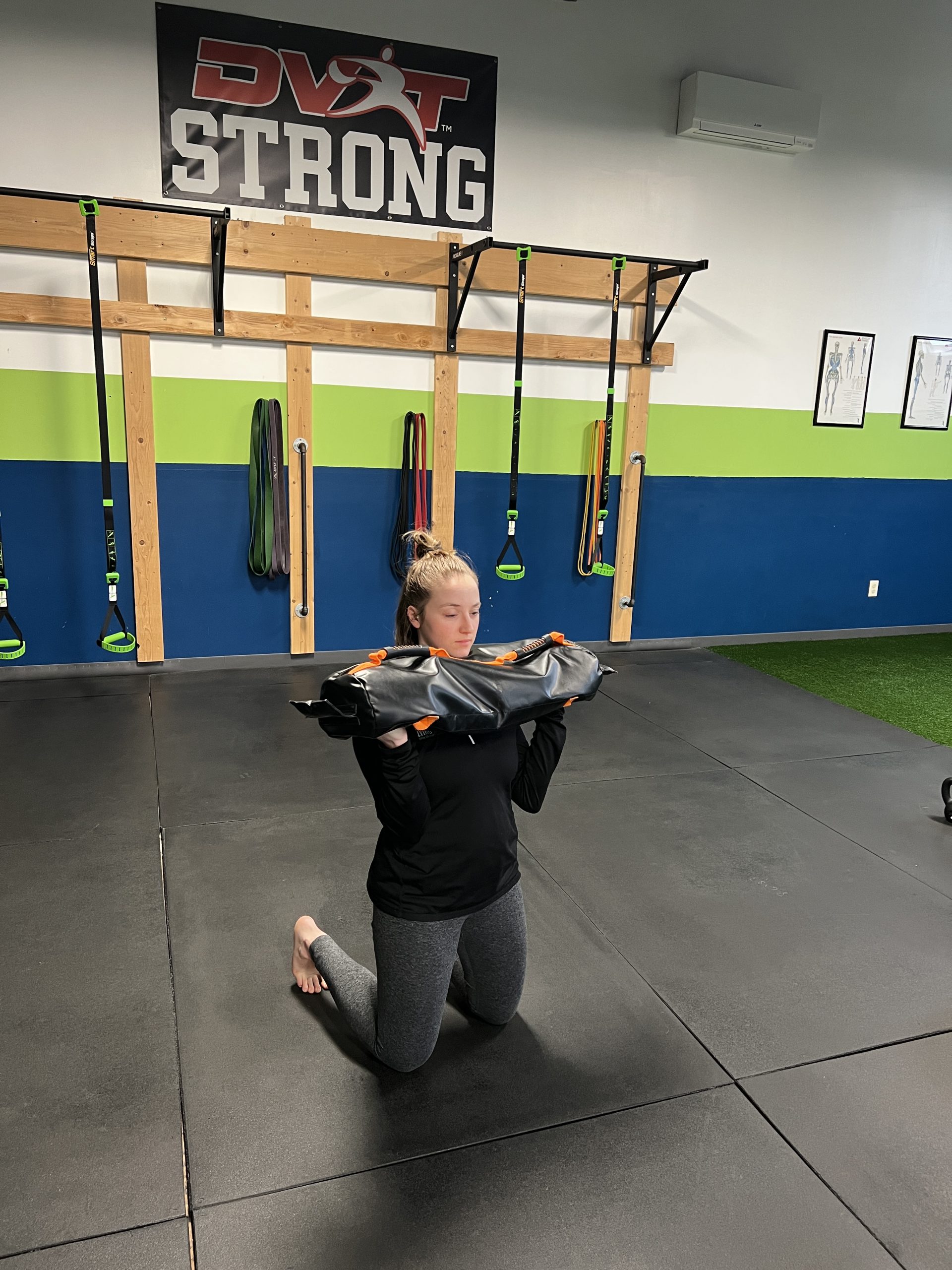
This next level of body position will make any weight you are using feel 5 – 10 pounds heavier; what a great solution for a group training session when you need to increase the load of someone, but don’t have enough equipment! Just take them from standing to tall kneeling and watch them have to adapt to the new demands!
If you thought the Tall K position was intense — wait until you meet it’s cousin the half kneeling (1/2 K) body position…bum bum bum! From the tall kneeling position, bring one foot out in front and keep it under the knee with the knee inline with the hip and there you have it! This body position will challenge any movement in the sagittal plane by having to resist frontal plane instability, just like the sprinter & splint stance. Unlike the two standing positions however, the 1/2 K position will require more stability to effectively perform any exercise.
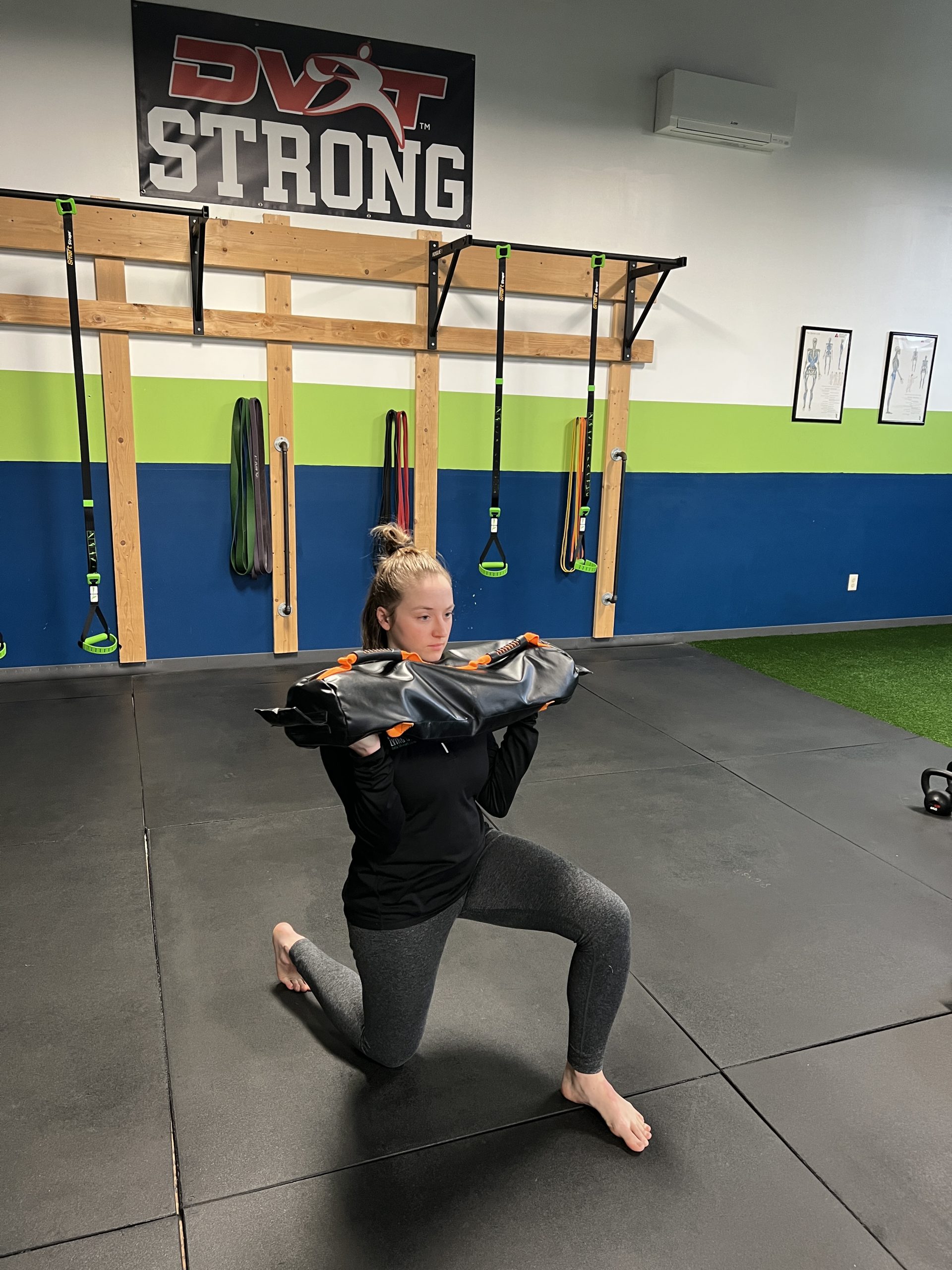
View this post on Instagram
Physical Therapist, Jessica Bento shows a host of different exercises that can be performed from the half kneeling position.
If you remember how I mentioned the split stance is similar to a lunge at the top spot, the 1/2 K body position will be the lunge at the bottom. This is a great solution for your clients who might struggle with lunges and need to learn how to build the strength necessary to perform this highly advanced movement with efficiency and effectiveness!
So there you have it, some of our popular body positions we rely on at Fitness Lying Down to challenge our clients and keeping things more engaged on the training floor — mind & body! I am so excited for you to unpack these training variables to keep your clients from getting bored while they continue moving towards and creating more fitness goals because of your ability to offer fitness solutions through better training! Great news is we still have some more variables to discover together, stay tuned for the next post!
Check out the series of progressions that Cory put together below for better lunging in both increasing strength and success!
This week you can save 25% on ANY of our Ultimate Sandbags/Water Bags and when you do you will get 36 workouts for FREE that will help you create an awesome gym no matter where you train. Just use code “sale25” HERE. Can’t make it to Cory’s great gym, Fitness Lying Down? You can train like he does with his great training programs like Dynamic Strength HERE. Also don’t miss Cory leading our DVRT Restoration Certification, our powerful corrective exercise program HERE
© 2025 Ultimate Sandbag Training. Site by Jennifer Web Design.







